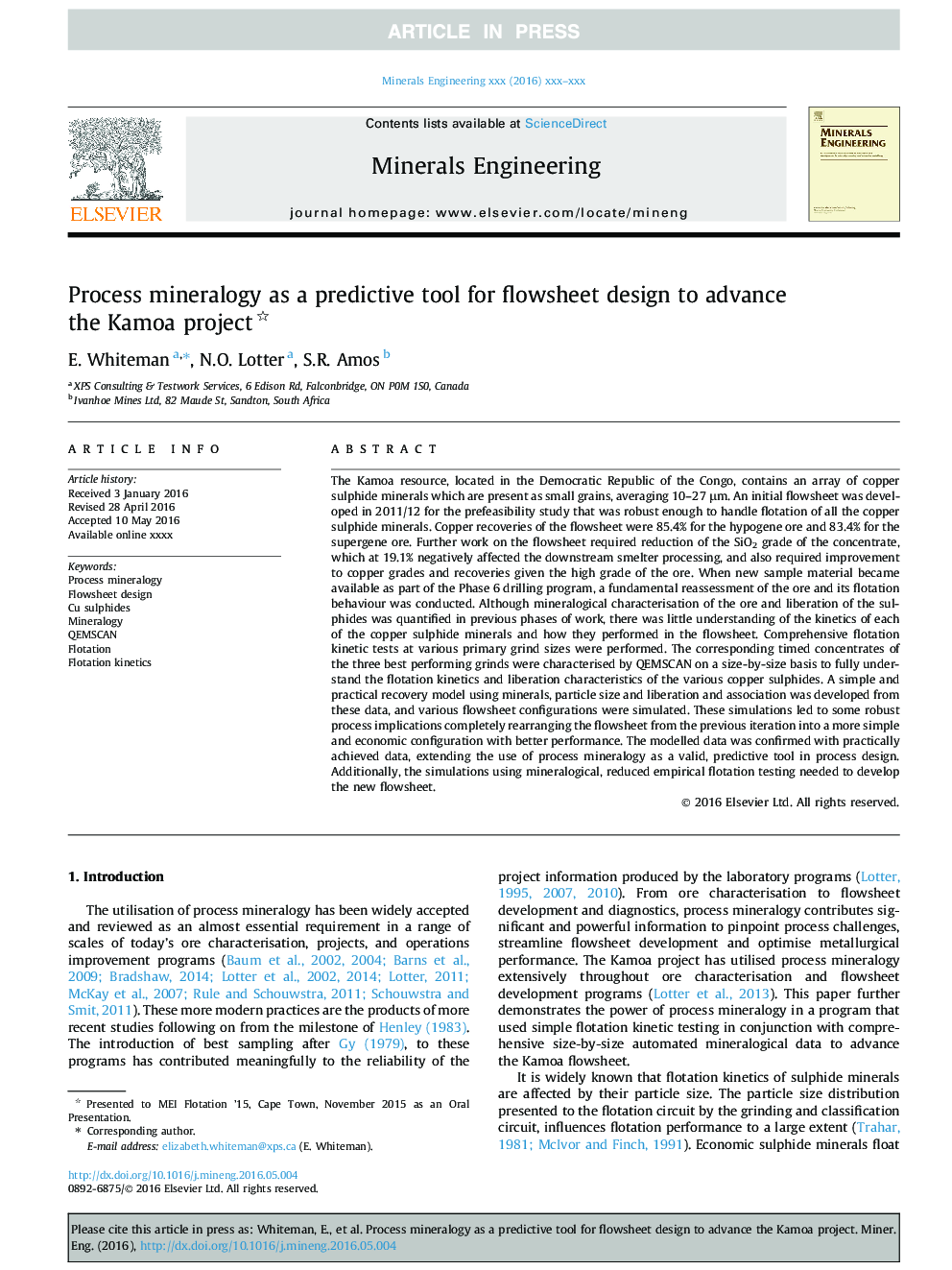| کد مقاله | کد نشریه | سال انتشار | مقاله انگلیسی | نسخه تمام متن |
|---|---|---|---|---|
| 4910345 | 1427614 | 2016 | 9 صفحه PDF | دانلود رایگان |
عنوان انگلیسی مقاله ISI
Process mineralogy as a predictive tool for flowsheet design to advance the Kamoa project
ترجمه فارسی عنوان
کانی شناسی فرایند به عنوان یک ابزار پیش بینی کننده برای طراحی طرح جریان برای پیشبرد پروژه کاوونا
دانلود مقاله + سفارش ترجمه
دانلود مقاله ISI انگلیسی
رایگان برای ایرانیان
کلمات کلیدی
موضوعات مرتبط
مهندسی و علوم پایه
مهندسی شیمی
مهندسی شیمی (عمومی)
چکیده انگلیسی
The Kamoa resource, located in the Democratic Republic of the Congo, contains an array of copper sulphide minerals which are present as small grains, averaging 10-27 μm. An initial flowsheet was developed in 2011/12 for the prefeasibility study that was robust enough to handle flotation of all the copper sulphide minerals. Copper recoveries of the flowsheet were 85.4% for the hypogene ore and 83.4% for the supergene ore. Further work on the flowsheet required reduction of the SiO2 grade of the concentrate, which at 19.1% negatively affected the downstream smelter processing, and also required improvement to copper grades and recoveries given the high grade of the ore. When new sample material became available as part of the Phase 6 drilling program, a fundamental reassessment of the ore and its flotation behaviour was conducted. Although mineralogical characterisation of the ore and liberation of the sulphides was quantified in previous phases of work, there was little understanding of the kinetics of each of the copper sulphide minerals and how they performed in the flowsheet. Comprehensive flotation kinetic tests at various primary grind sizes were performed. The corresponding timed concentrates of the three best performing grinds were characterised by QEMSCAN on a size-by-size basis to fully understand the flotation kinetics and liberation characteristics of the various copper sulphides. A simple and practical recovery model using minerals, particle size and liberation and association was developed from these data, and various flowsheet configurations were simulated. These simulations led to some robust process implications completely rearranging the flowsheet from the previous iteration into a more simple and economic configuration with better performance. The modelled data was confirmed with practically achieved data, extending the use of process mineralogy as a valid, predictive tool in process design. Additionally, the simulations using mineralogical, reduced empirical flotation testing needed to develop the new flowsheet.
ناشر
Database: Elsevier - ScienceDirect (ساینس دایرکت)
Journal: Minerals Engineering - Volumes 96â97, October 2016, Pages 185-193
Journal: Minerals Engineering - Volumes 96â97, October 2016, Pages 185-193
نویسندگان
E. Whiteman, N.O. Lotter, S.R. Amos,
